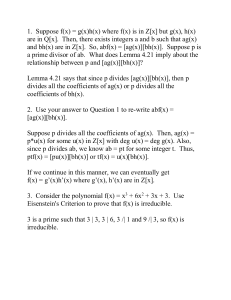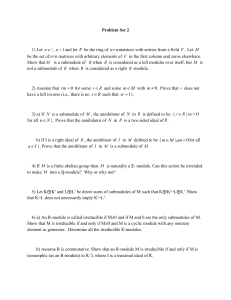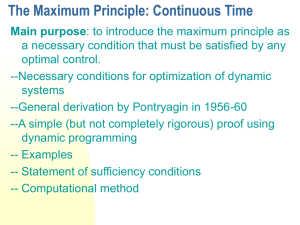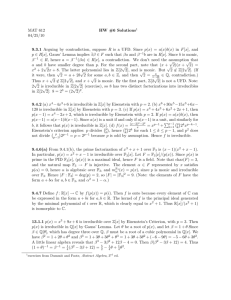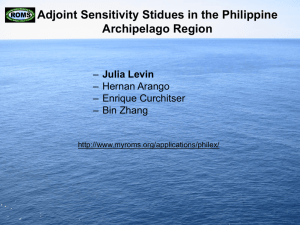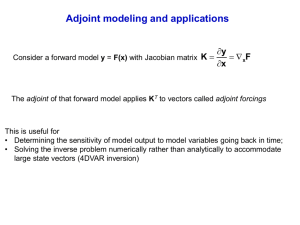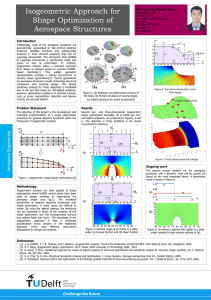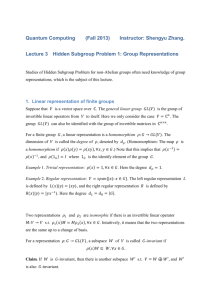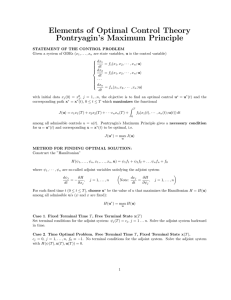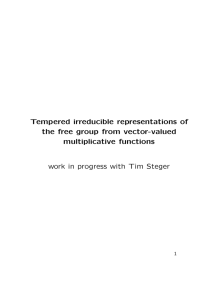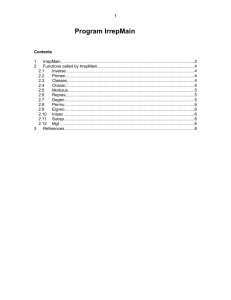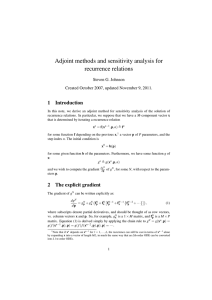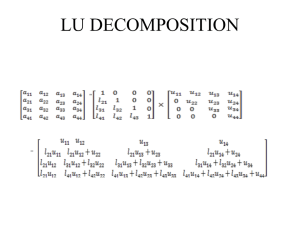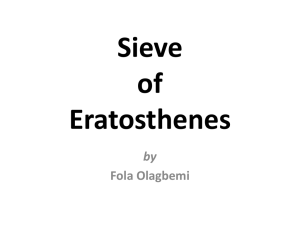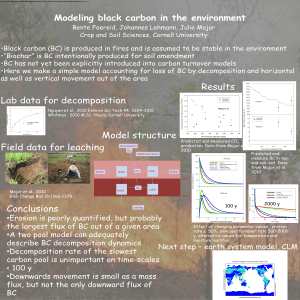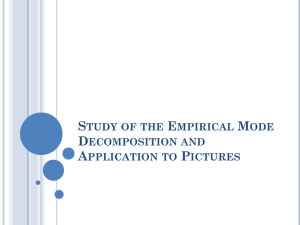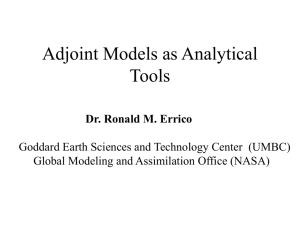Representation of sl(3,C)
advertisement
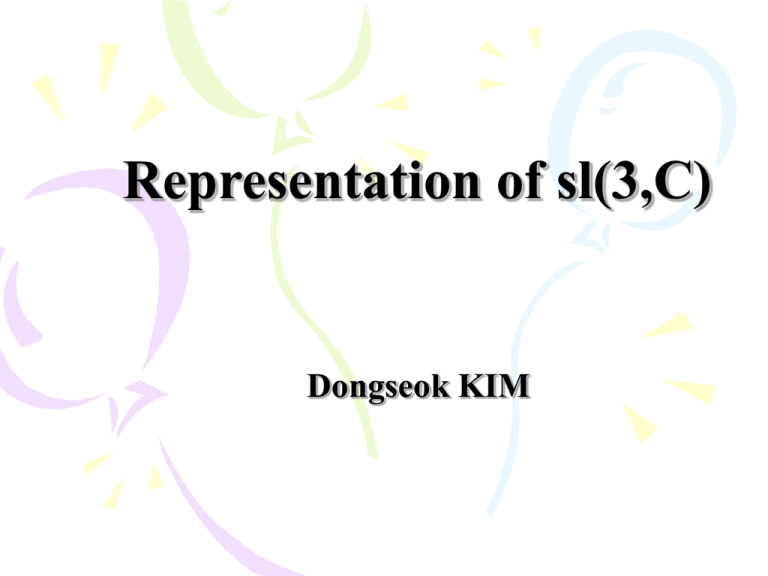
Representation of sl(3,C)
Dongseok KIM
Outline
• Adjoint representation of sl(3,C).
• Eigenspace decomposition with respect to H, the
maximal abelian subalgebra.
• Classify irreducible representations of sl(3,C).
• Tensor rules (weight, Brauer, honeycomb, hives)
• Invariant spaces, web spaces
• The Lie algebra sl(3,C) is generated by
Adjoint representation of sl(3,C).
• We consider the general setup for the adjoint
representation. First, we find L0=CL(h)=h.
• The set of all nonzero a2 h* for which La 0 is
denoted by F and the elements of F are called the
roots of sl(3,C) with respect to h.
• The decomposition
sl(3,C)=h©(©a2FLa)
is called a Cartan decomposition or root space
decomposition of sl}(3,C).
Since
we can write
h*=C[L1, L2, L3]/(L1+L2+L3=0)
where
We find the Cartan decomposition of adjoint
representation.
Irreducible representation of sl(3,C)
• Let V be a finite dimensional irreducible
representation of sl(3,C).
• First, we decompose V into eigenspaces of h. For the
adjoint representation a was called a root, for other
representation a is called a weight of V. A diagram of
all weight with multiplicity is called a weight
diagram. Then one can find a vector v2 Va such that
Xij(v)=0 which is called a highest weight vector of V
and the corresponding weight is called highest weight
of V. Then V is generated by the images of v under
successive applications of three operatorsYij.
• Since sl(2,C) is immersed if we restrict actions of h to
{ Xij, Yij, Hij}, we can see it reflects along three line
<Hij, L>=0.
• Thus given the highest weight, we can find the
hexagonal (possibly triangular) region that all weights
of V appear. The following figure shows how to find
the region from the given highest weight a.
• The next step will be how we deal with the interior of
the region.
• In general, we find it by theorems by Freudenthal and
Kostant.
• For sl(3,C), first the multiplicity of the boundary is 1.
Next, we can shrink the boundary by one time actions
of Xij, Yij, if the boundary was hexagonal, the
multiplicity of weight for the resulting polygon goes
up by one, otherwise it stays the same. We continues
the process until we find all multiplicity of weights.
• Let 1 = L1, 2= - L3.
• For finite dimensional representation, the highest
weight must be in the region which can be expresses
in non-negative integral linear combinations of 1 and
2.
• This region is called the Weyl chamber of sl(3,C).
• The following is a weight diagram of an irreducible
representation of sl(3,C) of highest weight 41+22,
denoted by V41+ 2 or V(4,2). The number in the
weight diagram indicates the multiplicity of the
weight.
1) A given weight a in the Weyl chamber, there
exists an irreducible representation of sl(3,C)
with highest weight a. Moreover a can be
written as a linear combination of 1 and b2,
a1+b2 where a, b are nonnegative integers.
The irreducible representation is denoted by
V(a,b) =Va1+b2.
2) Any finite dimensional representation of
sl(3,C) is of the form Va1+b2.
Tensor Rule
• First we can use all weight diagram, for example we
look at the defining representation of sl(3,C), V(1,0)
which has three eigenvalues L1, L2 and L3. Also one
can find easily that its dual representation V(0,1) has
three eigenvalues -L1, -L2 and -L3.
• One can find that V(1,0) V(0,1) had the following
weight diagram which decompose into the adjoint
representation and the trivial representation.
V(1,0) V(2,1)
V(1,0) V(2,1) @ V(3,1) ©
• V(1,0) V(2,1) @ V(3,1) ©V(1,2) ©
• Therefore we find that
V(1,0) V(2,1) @ V(3,1) © V(1,2) © V(2,0)
There is another way using the Brauer theorem
• Honeycombs, V(1,0) is written by (0,1,1), V(2,1) by
(0,2,3). Then we find all possible honeycombs.
• V(3,1)
V(2,0)
V(1,2)
Invariant space
• First we find few dimensions of invariants spaces
–
–
–
–
Dim (Inv (V(1,0)3)) = 1,
Dim (Inv (V(0,1)3)) = 1,
Dim (Inv (V V*)) = 1,
Dim (Inv (V(1,0)2 V(0,1)2 )) = 2.
• Let x, y, z be eigenvectors of V(1, 0) and let w = x y
z – y x z + y z x – x z y + z x y – z y x. Then w
2 Inv (V(1, 0)3))
• Webs for U_q(sl(3,C)) are generated by the
following trivalent vertices
with relations
